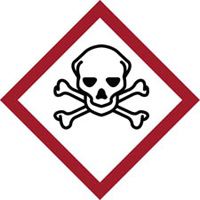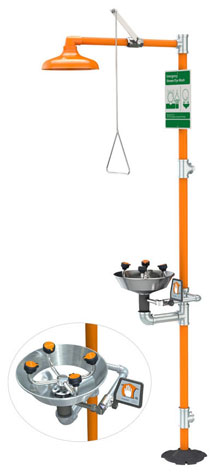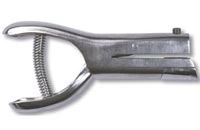| The Home page of ILPI's Safety Data Sheet (SDS) Resource, the leader in SDS information since 1995! | |
| The history and philosophy behind this resource. | |
| A curated collection of books and reference materials concerning Safety Data Sheets and closely related topics. | |
| Paste your plain text SDS into the SDS-Demystifier, and it will be converted into a hypertext-enriched document with links to detailed explanations of each key term. | |
| An extensive list of frequently asked questions about Safety Data Sheets including regulations, content, compliance, and more. | |
| A humorous take on Safety Data Sheet jargon. Fill in the blanks on our entry form to generate a personalized Unsafety Data Sheet to share with your coworkers. | |
| Since 1995, we've maintained this massive curated list of the best places to find Safety Data Sheets on the Internet. | |
| You are here! Way more than a glossary, this hypertext-enhanced resource covers hundreds of SDS-related terms and expert knowledge. Each entry includes both the SDS relevance and links to additional authoritative resources. | |
| Archived results of Safety Data Sheet related polls taken by some of our millions of site visitors | |
| The OSHA regulations behind SDS regulations, including the inspection guidelines and over 400 official interpretations letters under the Hazard Communication Standard | |
| Commercial suppliers of SDS authoring and management software as well as cloud compliance services. | |
| Commercial companies that will create SDS's for your specific needs as well as SDS translation companies. |

Safety signs, banners, and scoreboards? Get yours at Safety Emporium!
Definition
The Control of Substances Hazardous To Health (COSHH) regulations were first issued in 2002 and are administered by the Health & Safety Executive (HSE) of the United Kingdom. The regulations require employers to control exposure to hazardous substances in the workplace to prevent ill health.
Note: Do not confuse COSHH with CCOHS, which is the Canadian Centre for Occupational Health and Safety.

Get your GHS-compliant labels and signs from Safety Emporium.
Additional Info
Employer compliance with COSHH requires eight steps:
- Assess the risks from hazardous substances in your workplace.
- Determine what precautions are needed.
- Prevent or "adequately" control exposure.
- Ensure that control measures are used and maintained.
- Monitor employee exposure to hazardous substances.
- Carry out appropriate health surveillance.
- Prepare plans and procedures to deal with accidents, incidents and emergencies
- Ensure employees are properly informed, trained, and supervised.
These regulations not only prevent injuries to employees, but can also improve productivity, reduce accidents, and lessen legal/regulatory liabilities. Like most workplace safety regulations, they benefit employers and employees alike.

Safety Emporium carries all kinds of eye/face washes, safety showers, drench hoses and more.
Under the COSHH regulations, a Substance Hazardous to Health is any of the following:
- which is listed in Table 3.2 of part 3 of Annex VI of the CLP Regulation; and for which an indication of danger specified for the substance is very toxic, toxic, harmful, corrosive or irritant;
- for which the Health and Safety Executive has approved a workplace exposure limit (WEL; similar to OSHA's PEL's);
- which is a biological agent;
- which is dust of any kind, except dust which is a substance within paragraph (a) or (b) above, when present at a concentration in air equal
to or greater than -
- 10 mg/m3, as a time-weighted average over an 8-hour period, of inhalable dust; or
- 4 mg/m3, as a time-weighted average over an 8-hour period, of respirable dust;
- which, not being a substance falling within sub-paragraphs (a) to (d), because of its chemical or toxicological properties and the way it is used or is present at the workplace creates a risk to health.
Examples include various fumes, dusts, vapors, mists, nanotechnology materials (which involve respirable particles smaller than 100 nm in diameter), gases and asphyxiating gases, and biological agents (germs). If the materials's packaging has any of the regulatory-required hazard symbols then it is classed as a hazardous substance.
Note: REACH replaced the now-obsolete CHIP regulations. Under CHIP, substances classifed as dangerous to health had ratings of T+ (very toxic), T (toxic), X (harmful), C (corrosive), or XI (irritant)
Substances not "hazardous to health" under COSHH include:
- Substances with their own regulations, such as asbestos and lead.
- Substances which are hazardous only because they are radioactive, at high pressure, at extreme temperature, have explosive or flammable properties, or are biological agents outside the employer's control (infectious diseases, for example).
Books Available
NOTE: We may collect a share of sales or other compensation from the links in the following list:
- "Safety at Work, Eighth Edition", Hardcover, 1,064 pages, 2013. Estimated price $92.63. Info and/or order.
- "Chemical Risk Assessment: A Manual for REACH, 1st Edition", Hardcover, 418 pages, 2014. Estimated price $81.43. Info and/or order.
- "Health and Safety at Work: An Essential Guide for Managers, Tenth Edition" (designed for employers in the UK), Paperback, 344 pages, 2016. Estimated price $47.00. Info and/or order.
- "Health and Safety: Risk Management 6th Edition", Paperback, 510 pages, 2024. Estimated price $85.00. Info and/or order.
- "Concise Guide to Workplace Safety and Health: What You Need to Know, When You Need It 1st Edition", Paperback, 409 pages, 2011. Estimated price $103.87. Info and/or order.
- "Occupational Health and Safety Management: A Practical Approach, Third Edition 3rd Edition", Hardcover, 608 pages, 2015. Estimated price $119.64. Info and/or order.
SDS Relevance
Substances to which COSHH applies will require an appropriate warning label and Safety Data Sheet per the REACH regulations which supplanted the earlier CHIP regulations. Much of the information that employers require for COSHH compliance can be found in the SDS's. You will find a wealth of information about COSHH in the Further Reading links below:
Further Reading
- The HSE's Control of Substances Hazardous to Health - COSHH web site has all kinds of useful information.
- Working with substances hazardous to health. A brief guide to COSHH (PDF).
- COSHH Essentials provides advice on controlling the use of chemicals for a range of common tasks, e.g, mixing, or drying.
- Health & Safety Executive (HSE).
- Chemicals at Work at the HSE, covers all of the major UK/EU regulations - COSHH, REACH, GHS, PIC, CLP, and COMAH.
- Updates, amendments and Northern Ireland versions to the COSHH at legislation.gov.uk
- The full text of the original Control of Substances Hazardous to Health Regulations 2002 at legislation.gov.uk. This is not the current version
See also: CHIP, REACH, risk phrases, safety phrases, and the International Section of the SDS FAQ.
